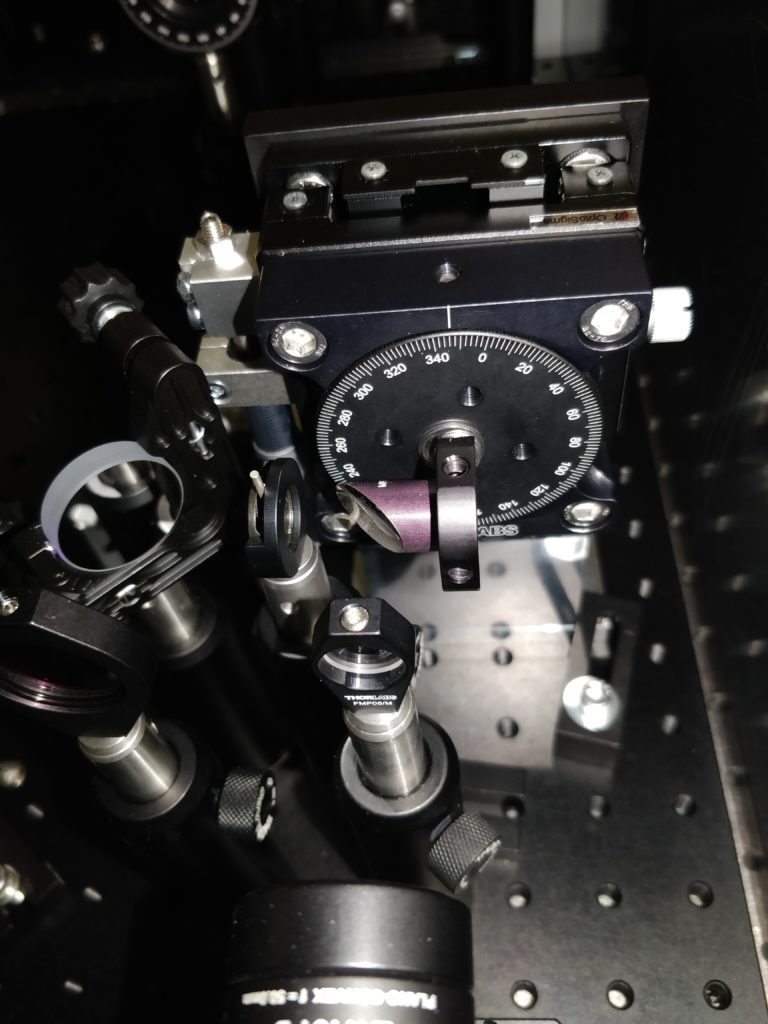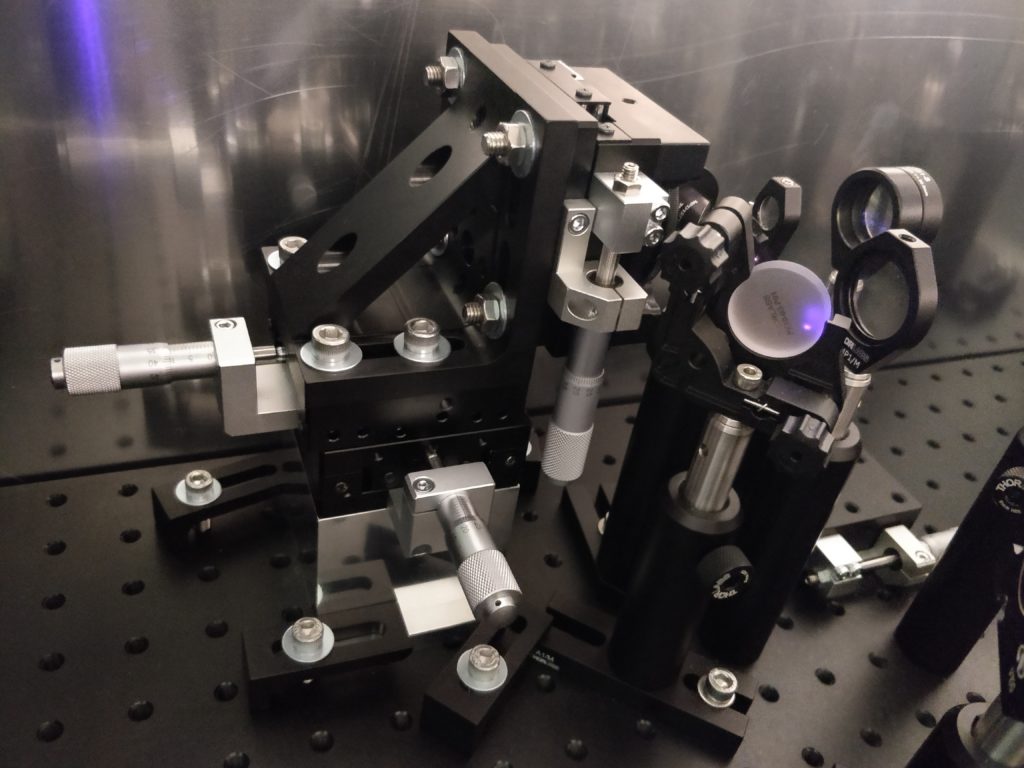Paper describing the 2D spectrometer design was published in The Journal of Physical Chemistry A (DOI: 10.1021/acs.jpca.0c00285). The accepted version of the manuscript can be downloaded here, along with the supporting information.
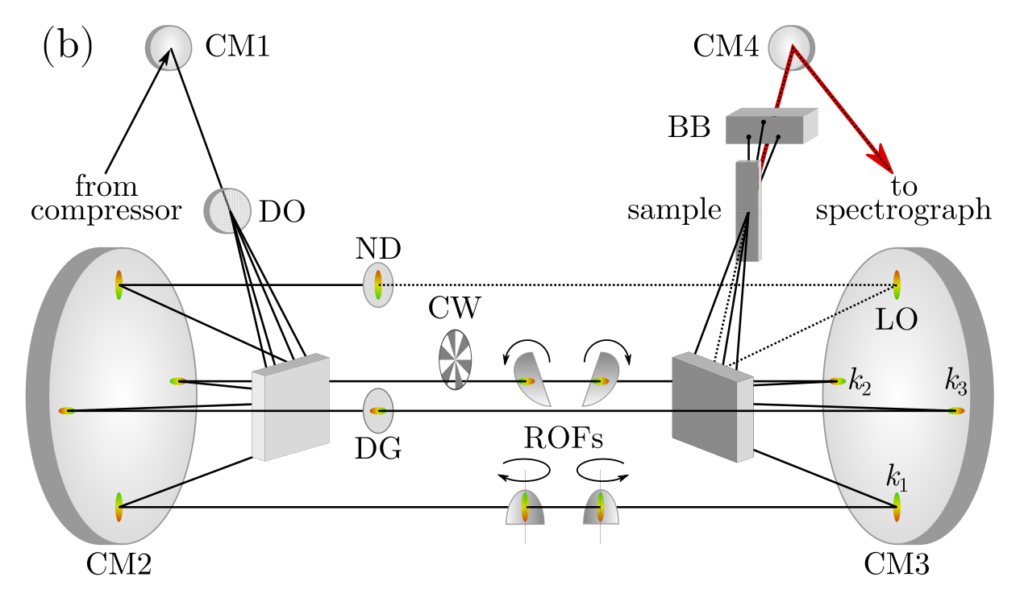
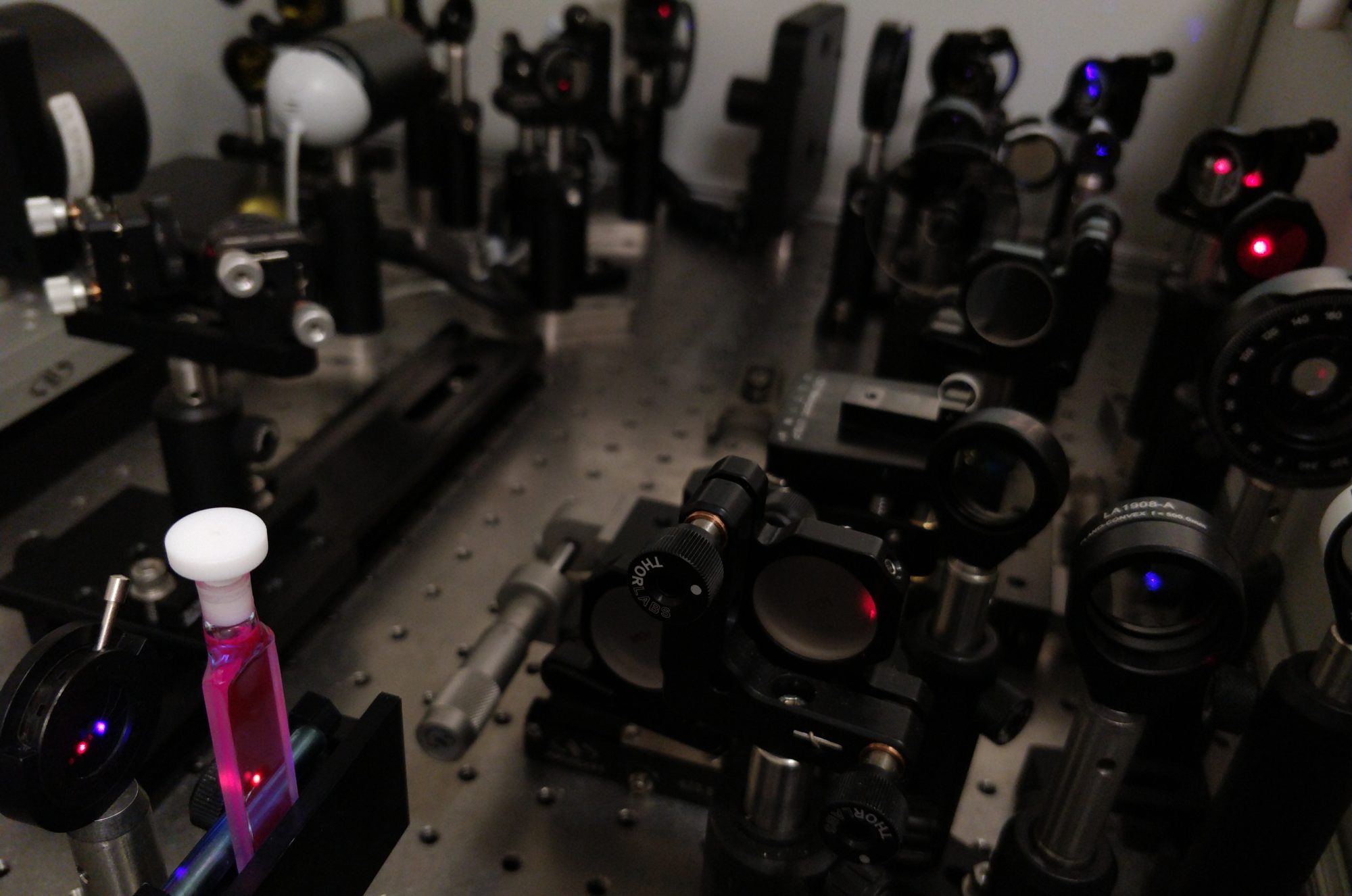
Technical Consultant, Adelaide, South Australia
Paper describing the 2D spectrometer design was published in The Journal of Physical Chemistry A (DOI: 10.1021/acs.jpca.0c00285). The accepted version of the manuscript can be downloaded here, along with the supporting information.

Update: This post is now outdated! We ended up using a similar, but much improved, spectral interference method using a broadband laser source instead of the continuous-wave HeNe laser. The method is described in the publication on the spectrometer design.
Here is a quick rundown on how the delay stages are calibrated to relate the rotation angle to the delay time of the laser pulse.
An interferometer is built by inserting a mirror/beamsplitter combination after the delays to interfere pairs of the four beams. A Helium-Neon (HeNe) laser is used as the light source, as the atomic emission at 632.8 nm is very well defined — a requirement to make a nice interference pattern and for use in the calibration fit equation.
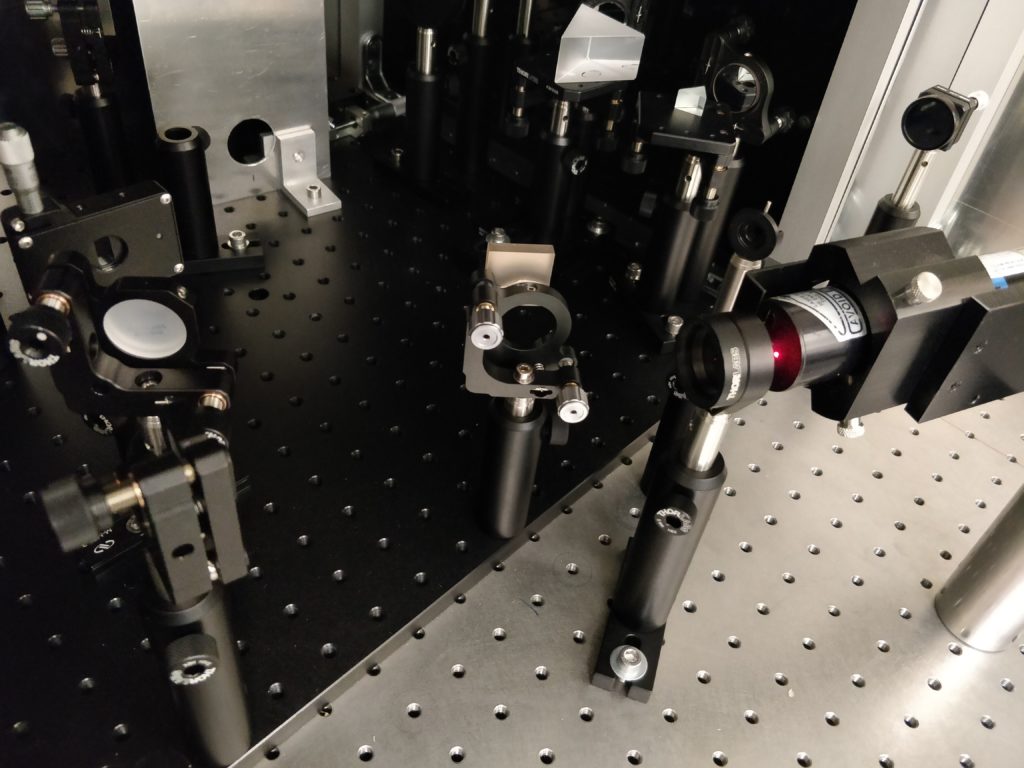
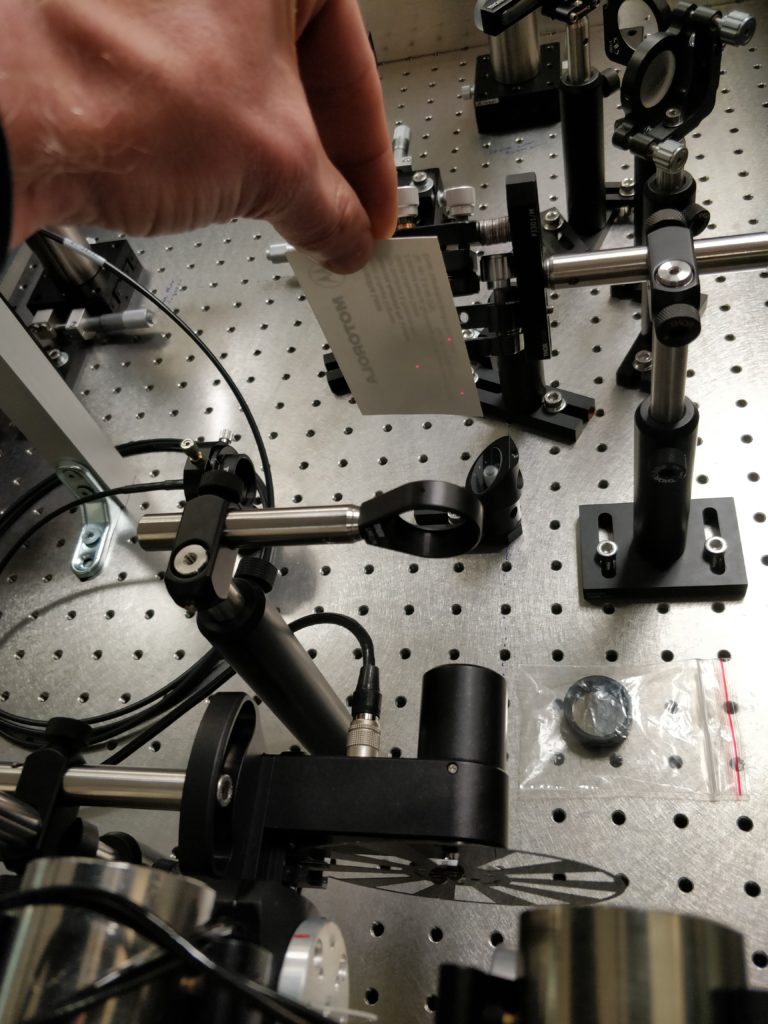
Here we show the vertical configuration of the beamsplitter/mirror combination, which interferes the top and bottom beams, directing them downwards towards the table. The beam is directed to a fibre-optic which feeds the spectrograph and camera.
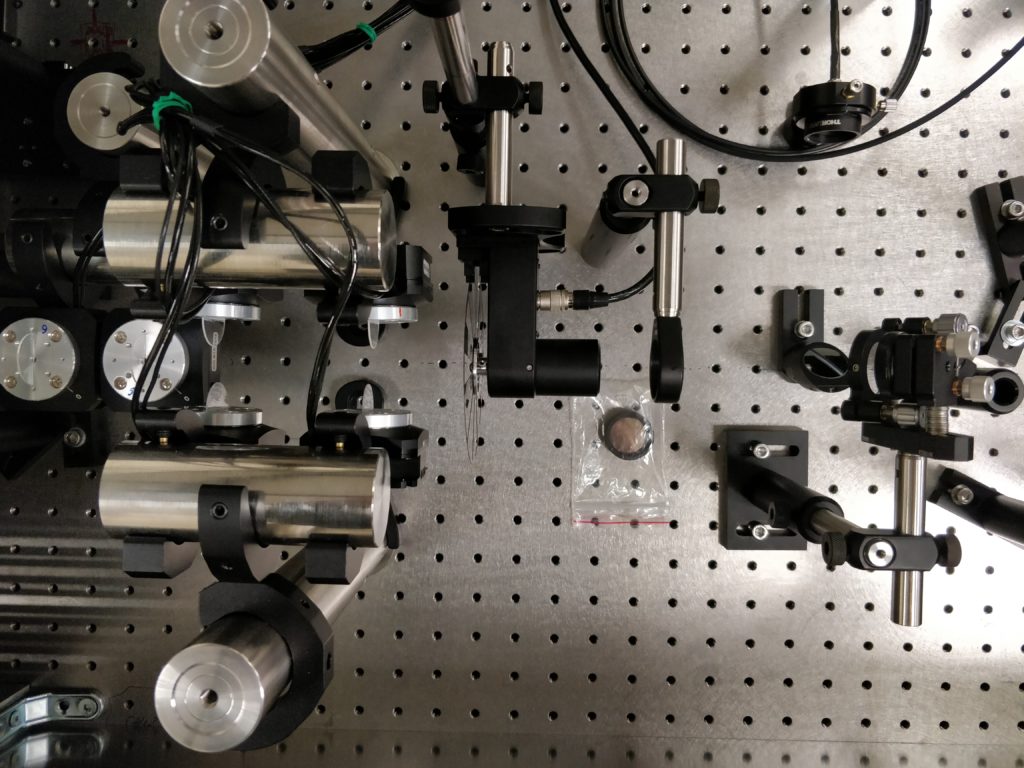
I think this is the first look here at some of the spectrometer software! The intensity at the 632.8 nm laser line is collected as a function of one of the rotational stage angles. The rotational stage is swept between 0° (glass perpendicular to beam) to around 45°. An interference pattern is generated.
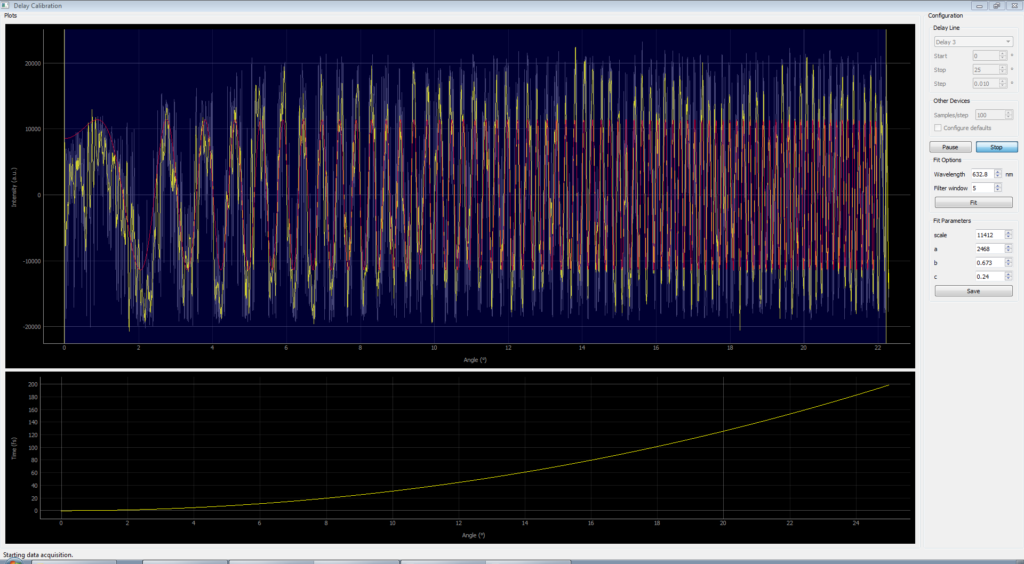
The grey trace is the raw intensity data as a function of rotational stage angle. The yellow trace is with a Savitzky–Golay noise filter applied. The red trace, and the yellow curve in the bottom panel show the theoretical angle-to-delay relationship. As the data is collected, or when the “Fit” button pressed, the fit is performed and the three fitting parameters (α, β, γ) are determined. The fit can also be adjusted in realtime as the parameters are changed manually.
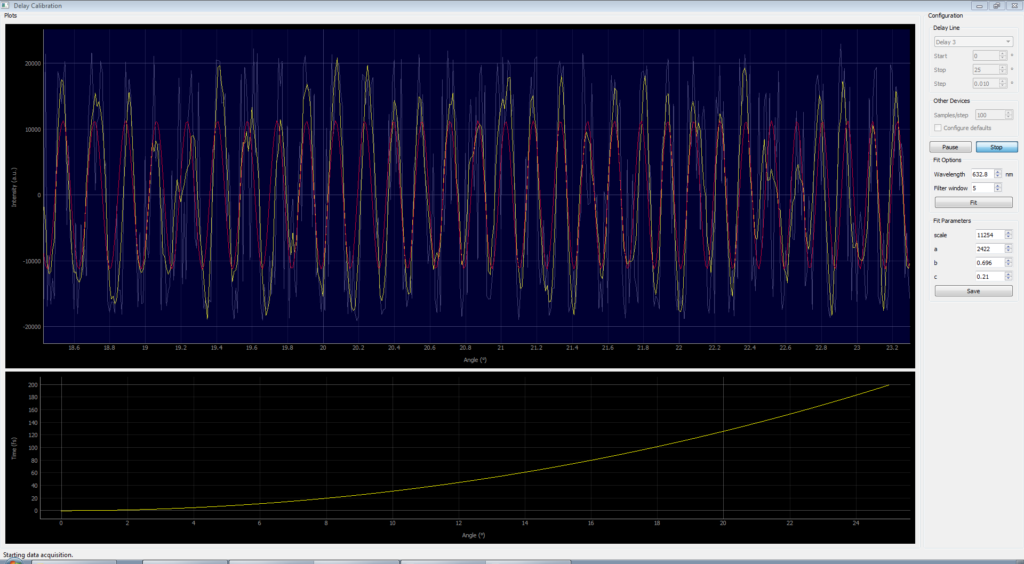
The theoretical model of the glass angle vs delay match the data very well across the entire range of rotation angles. That’s good, as it’s pretty fundamental to the whole spectrometer design!
Here’s a nice picture showing an overview of the spectrometer layout. The NOPA is in the back-left, with the compressor on the left. The spectrometer arms run down along the bottom edge, through the delay stages in the bottom centre. The beams are then directed back up to the sample and detector on the right side of the image.
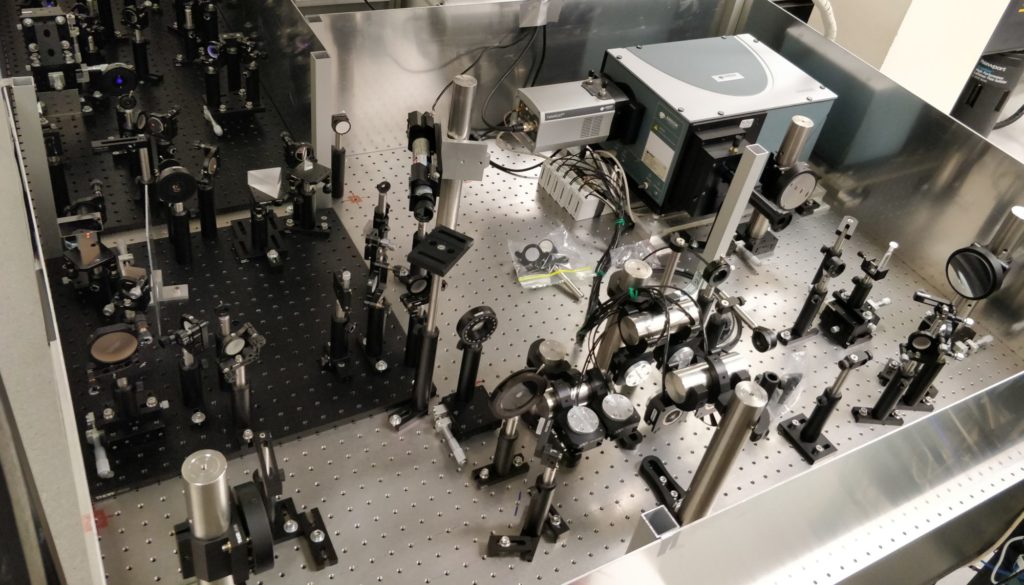
This is the back end of the spectrometer arms. The sample vial is visible, as well as the mirrors and lens used to direct light from the sample into the detector. The spectrograph is an Andor Shamrock, with an Andor Newton CCD camera as the detector. This is able to capture 500 spectra per second.
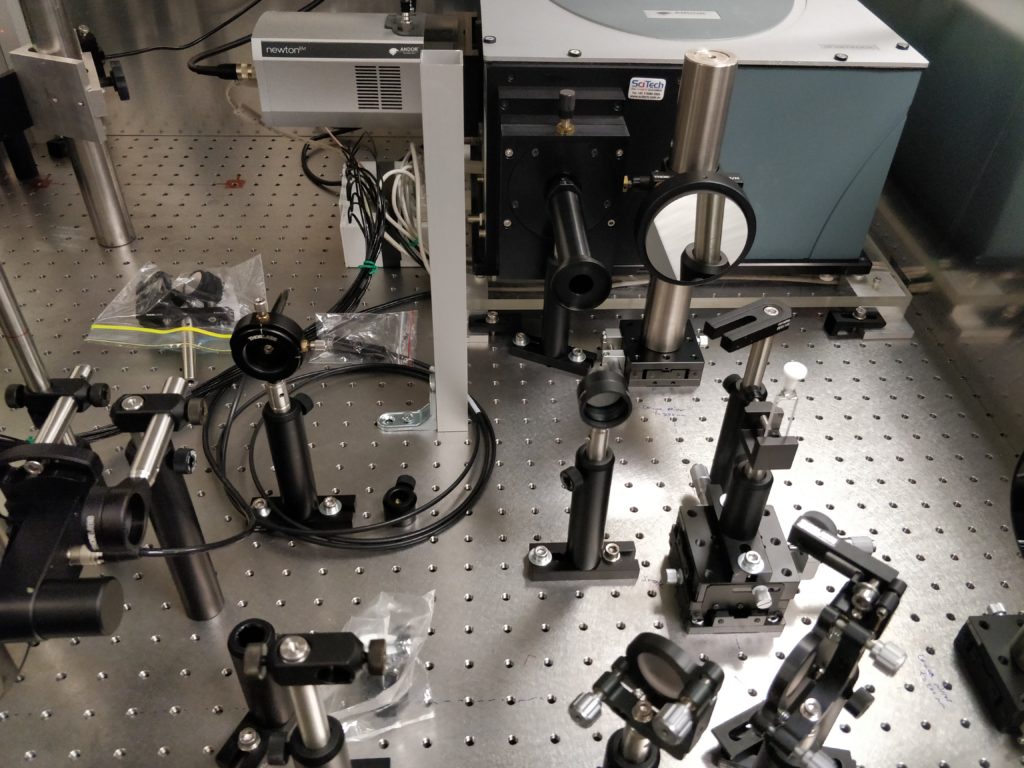
These are the three pairs of rotational stages and glass used to control the arrival times of the laser pulse sequence for the 2D spectrometer. The stages are computer controlled, and can rotate with an accuracy of one-thousandth of a degree. By rotating the glass, the effective thickness increases, delaying the laser pulse with control on the attosecond time scale. A pair of glass plates are used for each beam, rotated at opposite angles to correct for the path deviation.
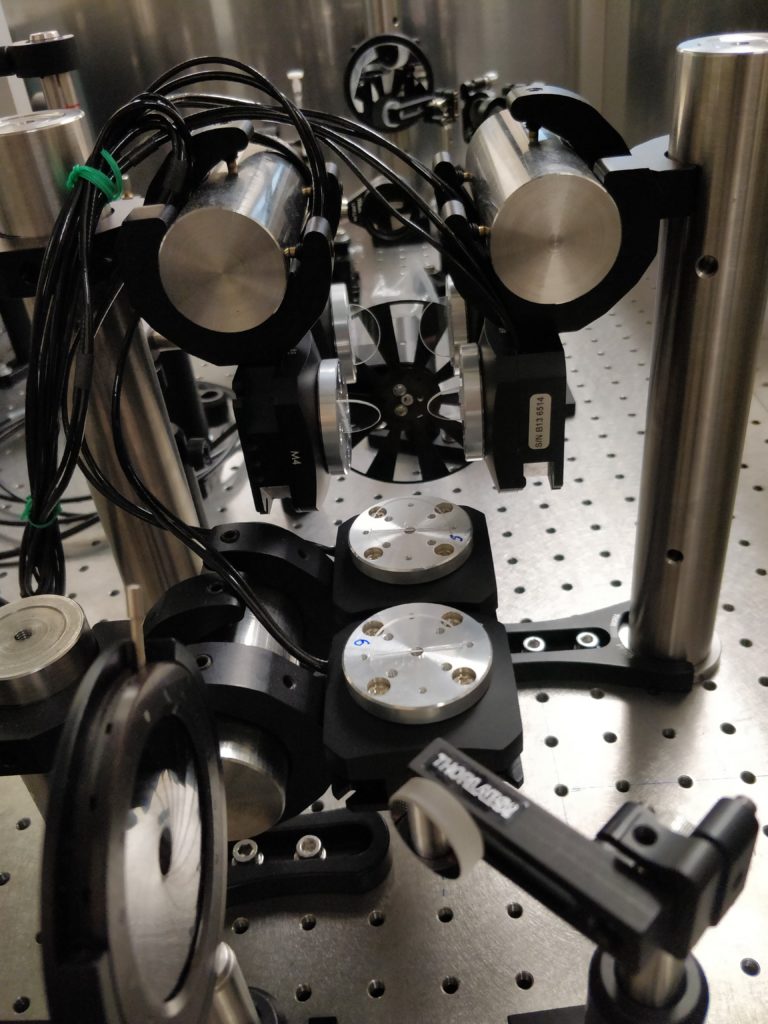
Here’s the layout of the pulse compressor. It consists of both grating and prism stages.
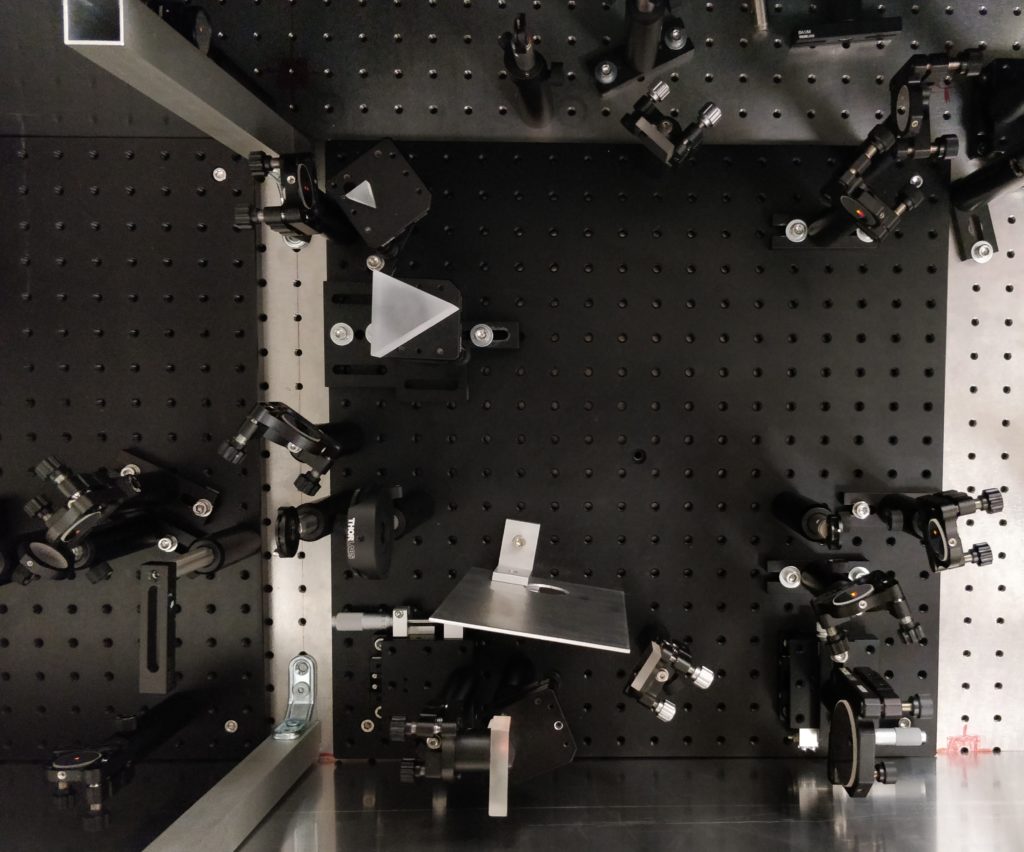
Here’s the layout of the non-colinear optical parametric amplifier (NOPA). It’s a tunable light source which can produce laser light anywhere across the visible spectrum. It’s fed by the output of our titanium-sapphire regenerative amplifier (Spitfire, Spectra Physics), which provides 100 fs duration pulses with a 1 kHz repetition rate, centred at a wavelength of 800 nm. We split that to produce a white-light continuum seed and a 400 nm pump beam. The precise angle and timing of the overlap of these beams on the nonlinear crystal (beta barium borate, BBO) will change the wavelength of the NOPA output. Currently this is generating light centred around 600 nm.
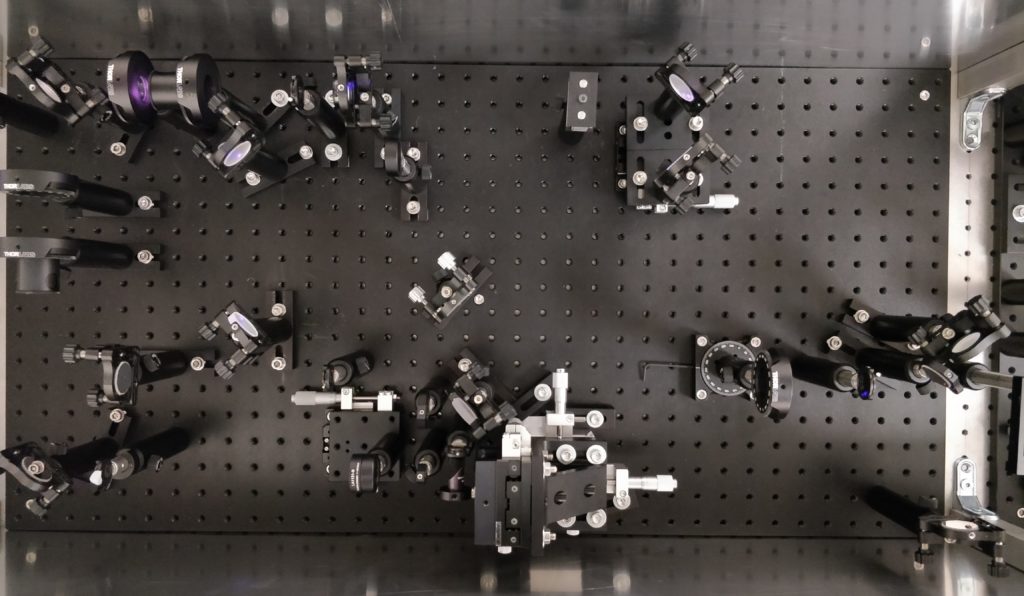
The output is strongly affected by the quality of the white-light seed. The white light is produced by focusing a small amount of the 800 nm laser onto a pure sapphire crystal. The produced white light radiates out and needs to be collected and collimated using a precisely placed curved mirror.
